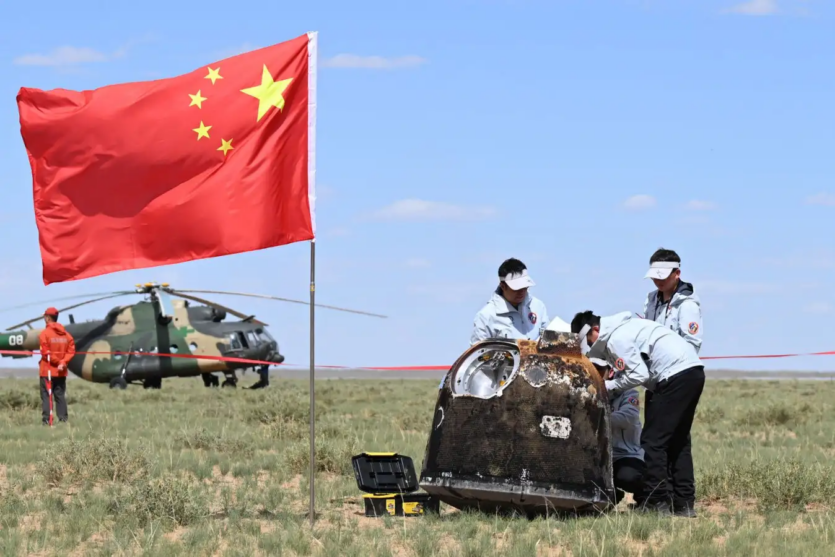
The «Chanye-6» spacecraft successfully landed in Inner Mongolia, delivering the first-ever soil and rock samples from the back of the Moon to Earth.
Xi Jinping congratulated China’s National Space Administration, calling the event «a remarkable achievement in the country’s efforts to become a space and technology power», reports Associated Press.
«Chagnier-6» landed on the moon June 2, but not without problems. Because, on the downside, the Moon itself blocks radio signals, the mission had to rely on previously launched Chinese lunar satellites, which made the process of establishing communication somewhat easier.
After «landing» in the basin of the Aitken impact crater, the probe used drilling tools and a robotic arm to «capture» soil and rock samples. It also delivered payloads from the European Space Agency, France, and Italy intended for «scientific research».
The Aitken crater itself probably formed about 4.26 billion years ago — and is just one of a number of impact craters formed by ancient collisions. The samples obtained from them are expected to help scientists better understand the topography of the still unfamiliar backside of the Moon and are likely to shed light on the early history of the satellite and the Earth.
«This is important for understanding the origin of life on Earth», — wrote the non-profit organization The Planetary Society in post about «Chanye-6» earlier this year, citing the theory that asteroids could have carried water and organic materials to Earth during the «heavy bombardment».
The «Chanye-6» — mission is also an important milestone for China in the race to establish a global human presence on the Moon.
The next spacecraft, «Chanye-7», is planned to be sent to the Moon in 2026 — to search for water and other resources that could potentially support long-term missions. NASA also wants to send the first humans to the lunar south pole in 2026 as part of its Artemis III mission.

Spelling error report
The following text will be sent to our editors: